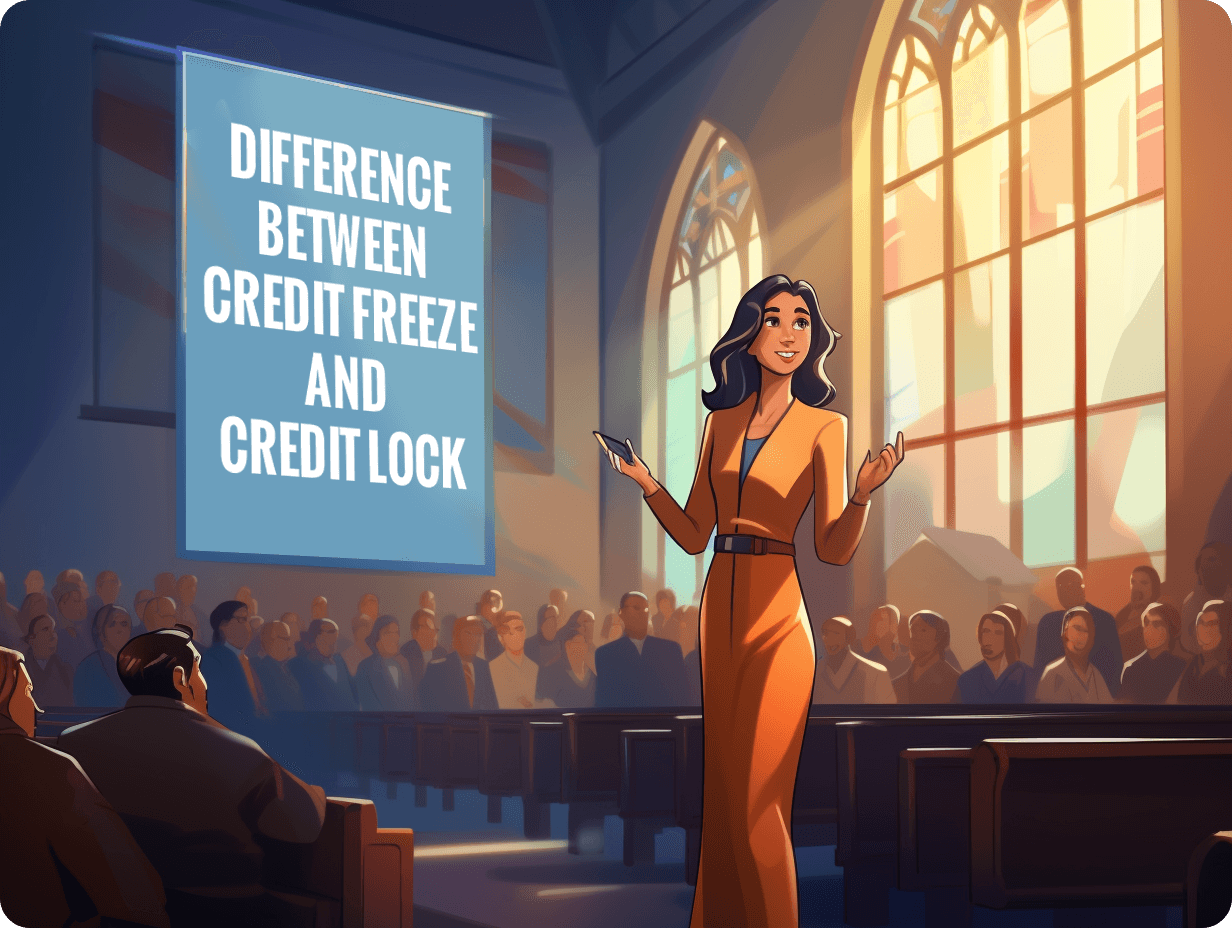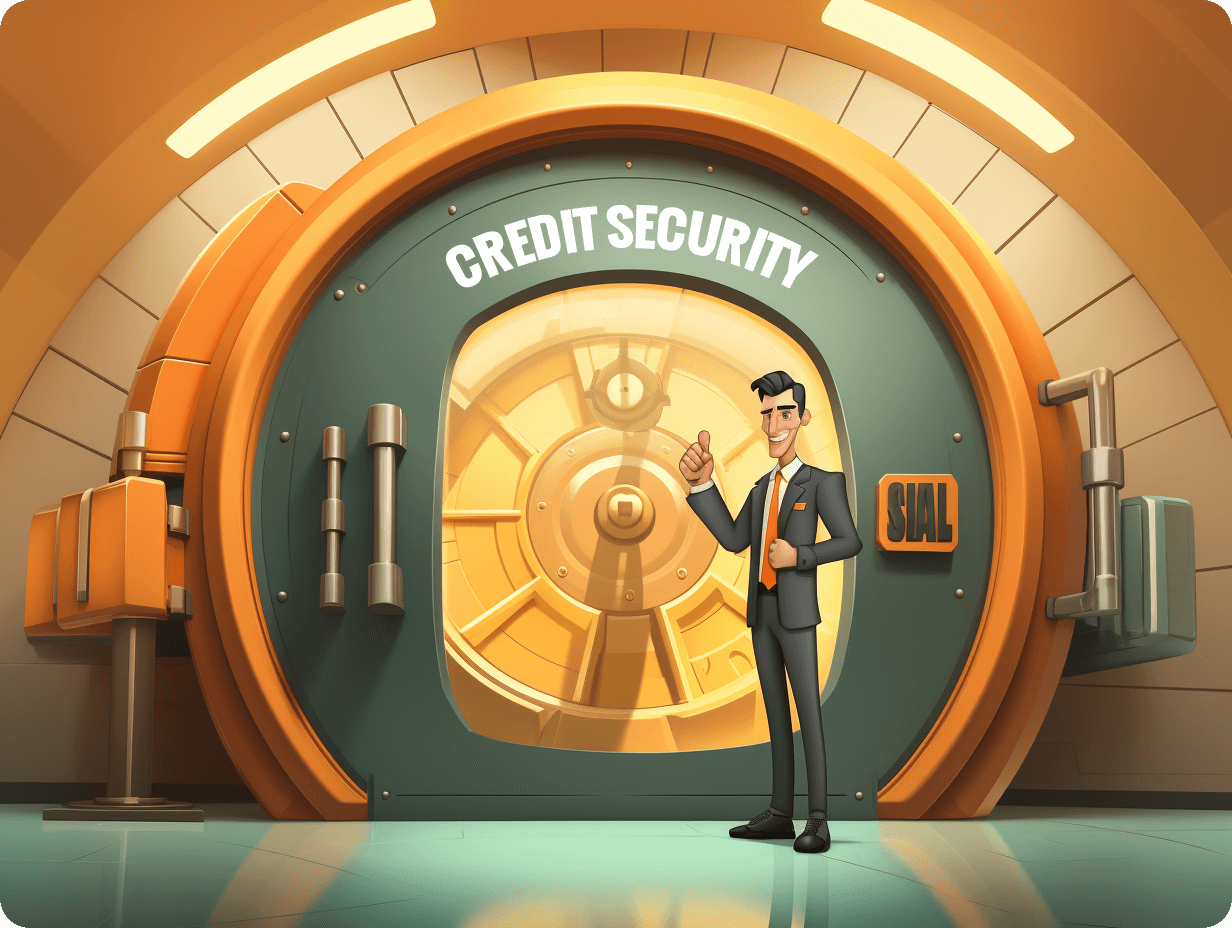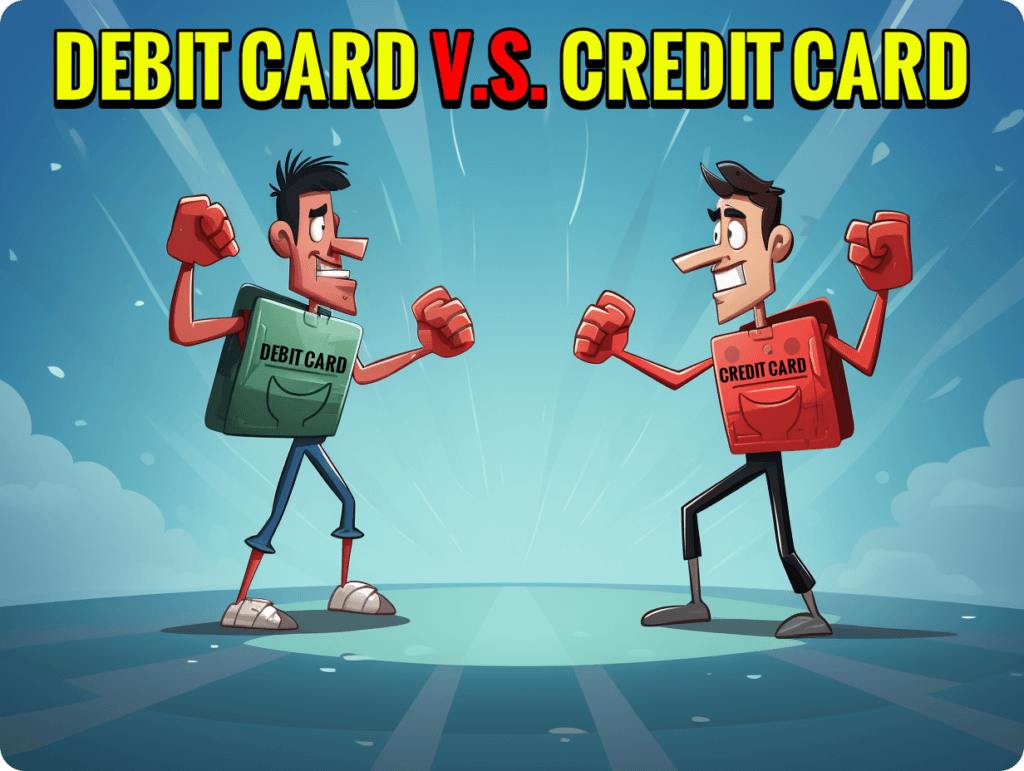- Blogs
- /
- Difference Between Credit Freeze and Credit Lock
Difference Between Credit Freeze and Credit Lock

Summary
Digital transactions are common today, and identity theft is a persistent issue. It is more important than ever to protect your finances.
Fortunately, there are ways to do this. However, choosing between a credit freeze or a lock can be puzzling. Both offer security, but they work differently, which can be confusing.
Understanding the disparities between a credit freeze and a credit lock is crucial. And so, this piece examines credit freeze vs lock. It explores the complexities of credit protection. Their differences, as well as their benefits and drawbacks.
This way, you can make an informed decision about securing your finances. Ultimately, you will fully understand how these technologies can strengthen their defenses. Let’s begin.
Key Takeaways
- Distinguishing between a credit freeze and a credit lock is vital. But both aim to protect your finances. They prevent unauthorized access to your credit reports.
- A freeze restricts access, acting like a padlock on your credit history. A lock may offer additional features. These include real-time alerts and convenient online management.
- Implementing a credit freeze or lock is a proactive measure. It protects sensitive information from unauthorized access. This includes social security numbers and birth dates. It also prevents potential misuse in fraudulent activities, like identity theft.
- Both credit freeze and lock significantly reduce the risk of identity theft. They act as an extra layer of security against fraudsters. Fraudsters attempt to open new accounts or conduct activities under false identities.
- Maintaining healthy credit scores is crucial for financial well-being. Ensuring the security of existing credit accounts is also vital. A credit freeze or lock acts as a protective barrier. It guards against threats from unauthorized access to sensitive financial data.
- Both freezing and locking strengthen protection against potential threats. They provide peace of mind and a comprehensive defense against unauthorized access.
- Balancing goals with outcomes involves understanding why one chooses to freeze or lock. It also involves aligning personal circumstances with broader privacy and data protection concerns.
Credit Security: Credit Freeze vs Lock

Understanding the difference between a credit freeze and a credit lock is crucial. Both options safeguard your financial well-being.
However, a credit freeze restricts access to your credit file. It makes it inaccessible for new credit checks or applications. It’s like putting a padlock on your credit history. It prevents anyone from opening new lines of credit in your name without permission.
A credit lock provides similar protection. But it may have extra features. For example, some major credit bureaus offer real-time alerts. They also provide easy online management through mobile apps.
Both options serve the same purpose. Yet, they differ slightly in their implementation and availability across different states. Understanding these distinctions can help you make an informed decision. It can help you choose which option best suits your needs.
Importance of Credit Security
1. Protecting Your Credit
Safeguarding your financial well-being involves taking proactive measures to protect sensitive personal information. You could use it to prevent fraudulent activities, such as identity theft. You can prevent unauthorized individuals from accessing and misusing your valuable data. This includes social security numbers, birth dates, and other critical details. These details are often used in fraudulent activities.
2. Minimizing the Risk of Identity Theft
Identity theft occurs when unauthorized individuals intentionally access someone else’s personal information. This can lead to severe consequences. For example, it can damage credit scores. It may result in fraudulent charges on existing accounts.
It may also lead to the opening of new accounts under false identities. Using a credit freeze or lock reduces the risk of identity theft. It adds an extra layer of security against potential threats.
3. Safeguarding Your Financial Well-Being
Your financial well-being is closely tied to maintaining healthy credit scores. Ensure that no unauthorized activity occurs within your existing credit accounts. Implementing a credit freeze or lock acts as a protective barrier. It guards against potential threats from fraudsters seeking access to sensitive financial data.
Understanding Credit Freeze
A credit freeze and a credit lock are security measures. They protect your credit information from unauthorized access. When you place a credit freeze or lock on your accounts, it restricts access to your credit report.
This makes it difficult for identity thieves to open new accounts in your name. This can help prevent fraudulent activity and safeguard your financial well-being.
Contact any of the three major credit bureaus to implement a credit freeze. To do so, you’ll need to provide personal information. This includes your name, address, social security number, and date of birth. After the process, creditors need your permission to view your credit report.
A credit lock typically allows you to use an app or online platform provided by one of the major credit bureaus. It lets you block access to your credit report instantly. This method offers more convenience than a traditional freeze. However, it may come with extra fees or subscription charges.
Understanding how these options influence creditworthiness is also crucial. Both methods are designed to prevent unauthorized individuals from accessing sensitive financial information. This information could impact your ability to secure loans or lines of credit.
Decide whether to freeze or lock. To do so, you must assess their impact on future opportunities. Both options protect against identity theft and fraud. However, they may impact your ability to get new loans, like mortgages or auto loans.
Duration
The duration of effectiveness differs between a freeze and a lock. So, understanding the procedural requirements for each option is necessary.
When you freeze your credit, it stays in place. It lasts until you lift it temporarily or permanently. Use unique PINs provided during its initiation to do so. In contrast, a credit lock generally remains effective. You remove it using an online portal or mobile app offered by one of the three main credit bureaus.
Learn the steps required by each of the three major credit bureaus. This will make the process easier and more efficient. This will help you initiate either option. Once it’s implemented, you can ensure your credit information is protected.
To understand each option’s requirements, you should also know its costs or fees. Some people prefer the flexibility of a credit lock. Others may prefer the added security measures offered by a credit freeze.
Impact on Score
A credit freeze and lock protect individuals from identity theft and fraudulent activity. A credit freeze may cause inconvenience when applying for new credit. However, it does not impact credit scores.
A credit lock offers more flexibility. But unlocking may come with fees. It’s crucial to weigh the pros and cons of each option. Choose the one that best suits individual needs and preferences.
Unveiling Credit Lock
Clarifying basic ideas is vital. This is especially true when discussing ways to access credit reports during a freeze or lock. Placing a credit freeze or lock does not affect existing lines of credit. It also does not negatively impact one’s credit score. Individuals should be aware of this.
During a credit freeze, individuals can still access their credit reports. They can also get reports from specific entities they are connected to. For example, they can get reports from current creditors. They can also get reports from debt collectors working for those creditors.
However, a credit lock provides more flexibility. Some services allow users to lock and unlock their reports online instantly. They can also do this in mobile apps. Users do not have to contact each agency separately.
Importance of a Credit Lock
1. Enhancing overall financial security
Locking mechanisms protect your credit. They are a proactive step toward boosting your financial security. Setting up a credit lock adds an extra layer of protection. It stops unauthorized access to your credit report. It also stops the opening of new credit accounts in your name.
Locking your credit helps safeguard against potential risks to your financial stability. It blocks identity theft and fraud. It also blocks cyber threats and data breaches. Taking this step is crucial. It keeps your finances safe.
2. Safeguarding against potential risks
By locking your credit, you prioritize comprehensive protection for long-term well-being. This approach ensures that only authorized parties can access your credit information.
Locking gives peace of mind. It dramatically reduces the risk of identity theft or fraud in opening new credit accounts without consent. It’s also an effective strategy for reducing the risks of unauthorized use of personal information for financial gain.
Credit Freeze vs Lock: Key Differences
1. Process
The process of implementing each security measure is a crucial point of differentiation. For a credit freeze, you must contact each credit bureau individually. Ask them to freeze your credit report.
But a credit lock is easier and more convenient. It can often be done online or through a mobile app from the credit bureaus. It offers protection like a freeze. But you can lock and unlock your credit anytime using a PIN or password.
2. Duration
A typical credit freeze stays in place until you lift it. Some states have laws saying how long it can stay active without being lifted. This period is usually seven years. In contrast, you can set a credit lock indefinitely. You can also remove it permanently or temporarily.
3. Cost
Placing a freeze on your credit may involve fees. The fees depend on state laws, for example, unfreezing fees. But initiating a lock usually comes with subscription charges. How long each option lasts also affects cost. Each plan has ongoing expenses.
When to Use Each
1. Preventing Fraud
A credit freeze and a credit lock are valuable tools for preventing fraud. A credit freeze restricts access to your credit report. This makes it harder for thieves to open new accounts in your name. A credit lock also gives protection but with more flexibility. You can easily unlock or re-lock your credit using a PIN or password.
When choosing an option, consider the cost of each security measure. Some people can manage to budget for added security measures like credit freezes. Others might prefer the free locks from their banks. They offer convenience.
2. Soft Inquiries
Freezes or locks protect people from unauthorized access to their credit reports. They can also reduce the risk of fraud. Both options help prevent unauthorized parties from getting your credit information. They can’t do so without your knowledge or consent.
For instance, a credit freeze could help if you’re not planning to apply for new credit soon. It would give you extra protection against fraudsters accessing your data. But, if you need to access your report sometimes (e.g., when applying for loans), pick a more flexible option. Choose a lock.
The Effect of Credit Freeze and Lock on Soft Inquiries
1. Soft Inquiries During a Freeze or Lock
Soft inquiries happen when a person or company checks your credit. This occurs as part of a background check, pre-approved offer, or account review. Credit freezes and locks don’t affect soft inquiries.
During a credit freeze, employers can still access your credit report. Similarly, companies can perform soft pulls to provide you with pre-approved offers.
2. Differentiating Soft Inquiries from Hard Inquiries
Hard inquiries are different from soft inquiries. They happen when you apply for credit. They usually occur when seeking new credit cards, loans, or mortgages.
Lenders make hard inquiries during the application process. This may briefly lower your credit score.
3. Managing Potential Impacts on Your Financial Profile
Both soft and hard inquiries impact your financial profile differently. Understanding that a credit freeze or lock doesn’t affect either is vital.
By using these security measures, you can protect your personal information. You can do this without losing your ability to get pre-approved offers. You can also undergo needed background checks.
Setting up and Lifting a Credit Freeze

1. Pros and Cons
A credit freeze provides robust protection against identity theft. Freezing your credit prevents unauthorized access to your credit report. This makes it hard for fraudsters to open new accounts in your name. Also, knowing your financial information is secure can give you peace of mind.
However, a credit freeze can make applying for new credit or loans stressful. When you want to take out a loan or apply for a new credit card, you’ll need to lift the freeze temporarily. This extra step can be inconvenient and time-consuming.
Another advantage of a credit freeze is that it controls who can access your credit report. You can lift the freeze using a PIN or password. This will let some creditors in while keeping others out.
However, there is one downside. If you often need instant credit, such as when applying for store cards, lifting and re-imposing the freeze might be a hassle.
2. Initiating a Freeze with Major Credit Bureaus
You must contact each of the three major credit bureaus to freeze your accounts. Each bureau will require specific information before initiating the freeze. After giving the needed details and paying any fees (if required), the bureaus will freeze the person’s credit reports.
Understanding the Process with Different Reporting Agencies
Each reporting agency has its procedures for freezing and unfreezing accounts. Being aware of these processes is essential since they vary slightly between agencies. For example:
- Equifax might have different requirements compared to Experian
- The time taken for processing requests could differ among bureaus
- Some agencies may offer online tools, while others might require written requests
You should learn each bureau’s unique protocols. This will ensure a smooth process on all platforms.
3. Steps to Lift a Credit Freeze When Necessary
When deciding whether to lift a credit freeze, you must understand how this process works. You will usually need to contact three credit bureaus. They are Equifax, Experian, and TransUnion. You need to ask them to lift the freeze on your account.
After you submit this request online or by phone with each bureau, they will give you a PIN or password. It allows temporary unfreezing when needed. Once lifted, remember there may be some delay. All creditors have to update.
4. Regaining Access To Instant Credit When Needed
When you urgently need instant credit (e.g., due to an unexpected expense), just using a credit lock could help. It makes things faster and needs no prior notice. You only need a few steps. You can use mobile apps from various banks. They let you quickly regain instant access when needed.
5. Managing Temporary Removals Effectively
Both options have benefits and limits. So, it’s crucial to evaluate them fully before deciding. You must weigh these aspects against each other. Do so based on individual circumstances. Consider things like how often you need quick access. Also, consider worries about security breaches. Then, you can make an informed decision that suits you best.
To unfreeze a frozen or locked credit file, follow the steps from each major consumer reporting agency (CRA). This includes Equifax, Experian, and TransUnion. You may have to provide ID information. This can include your Social Security number, date of birth, and address.
You need to plan for seamless access to your credit when needed. This means planning for situations. You may need immediate access to new credit. For example, if you plan on applying for a mortgage or car loan soon, you must unlock the freeze beforehand.
Managing temporary unlocks efficiently means knowing how long they will last. It also means ensuring that any needed applications are done within that time. It’s essential for convenience. Reapplying for an unlock too often could cause hassle and delays.
The Process of Securing
It’s essential to recognize that both methods aim to limit access to one’s credit report. But, they differ slightly in how they work and their impact. Unlocking involves lifting a restriction. It lets you access your credit report when needed.
Traditional freezing methods may involve fees and specific requirements based on state laws. Some agencies offer free and easy online tools for managing locks on demand.
Unlocking allows people seeking new credit or loans, like mortgages or car loans, to lift the lock before applying. They can do this while keeping their overall protection.
In contrast, traditional freezing has more formal steps. These steps involve talking to each reporting agency when access is needed. This process can cause delays. It is needed when quick action is required on new credit account applications.
Choosing the most effective method
The choice between a freeze and a lock depends on personal preferences. It’s about convenience and flexibility.
Both options protect against unauthorized attempts to open new credit accounts. But locks are easier to manage. You can manage them through user-friendly online platforms. Major reporting agencies like Equifax, Experian, and TransUnion provide these platforms.
Fraud Alerts
Credit freezes and credit locks have the same primary purpose. They stop unauthorized access to your credit report. When you place a freeze or a lock on your credit, potential creditors cannot view your credit report. They can only see it if you lift the freezer or unlock it. This helps protect you from identity theft and fraudulent activities.
Placing a fraud alert on your credit file is another way to protect yourself from identity theft. It tells potential creditors to take extra steps. They should verify your identity before lending it to you. This can deter fraudsters from using your information to open accounts in your name.
Summary
We’ve walked the credit security landscape, from the implementation processes to the variable durations of efficacy, arming ourselves with information to strengthen our financial defenses.
The ultimate objective is always the same, whether of preference for the firm control of a lock or the flexible agility of a freeze: safeguarding the things most important in our linked digital lives.
Armed with this knowledge, you can take proactive steps to protect your financial well-being. Whether you opt for a credit freeze or a lock, the key is to stay vigilant against potential fraud.
As you navigate the world of credit security, remember that being informed and taking precautions are crucial. Check your credit reports often. Use a credit freeze or lock when needed. By staying proactive, you can safeguard your financial future and enjoy peace of mind.
FAQs
What is the difference between a credit freeze and a credit lock?
A credit freeze restricts access to your credit report. A credit lock lets you control access to your report in real-time. Think of a freeze as locking the door and a lock as having the ability to open and close it whenever you want.
When should I use a credit freeze?
Consider using a credit freeze if you’re not planning to apply for new credit soon or have been a victim of identity theft. It’s like putting your sensitive information in an unbreakable safe. No one can access it without your permission.
In what situations would implementing a credit lock be beneficial?
Using a credit lock can help when you want more flexibility. It gives you convenience in controlling who can access your credit report. It’s like having the power to lock or unlock vital documents with just a button. You can do it instantly.
Are there any advantages of using a credit freeze?
Yes, there are many advantages. They include protection against unauthorized access to your financial info. And they prevent fraudulent accounts in your name. It’s like adding extra security around your personal and financial data. This makes it very hard for anyone else to access.
How do I set up a credit lock?
Usually, setting up a Credit Lock involves calling three major consumer reporting agencies. You must call them one by one. You can also do this through their online platforms. Once set up, think of it as controlling who gets keys to specific rooms. You also control your financial information.
Our Latest Blogs:
FREE Strategy Session to Fix Your Credit Blogs / In today’s digitally interconnected world, we all face the danger...

ThisIsJohnWilliams

ThisIsJohnWilliams
FREE Strategy Session to Fix Your Credit Blogs / Facebook Twitter Linkedin Instagram Share Summary Have you ever wondered...

ThisIsJohnWilliams
FREE Strategy Session to Fix Your Credit Blogs / Dealing with financial difficulties is overwhelming. But when faced with...

ThisIsJohnWilliams

ThisIsJohnWilliams






